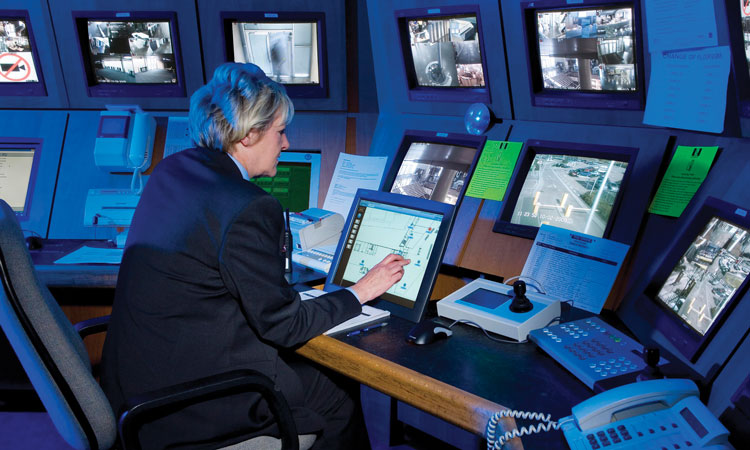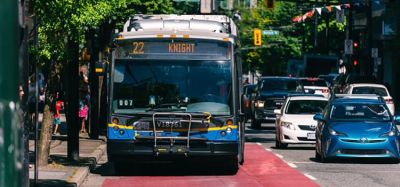Innovative security technology at the heart of city transport
- Like
- Digg
- Del
- Tumblr
- VKontakte
- Buffer
- Love This
- Odnoklassniki
- Meneame
- Blogger
- Amazon
- Yahoo Mail
- Gmail
- AOL
- Newsvine
- HackerNews
- Evernote
- MySpace
- Mail.ru
- Viadeo
- Line
- Comments
- Yummly
- SMS
- Viber
- Telegram
- Subscribe
- Skype
- Facebook Messenger
- Kakao
- LiveJournal
- Yammer
- Edgar
- Fintel
- Mix
- Instapaper
- Copy Link
Posted: 14 July 2014 | James Kelly | No comments yet
In busy city environments, transport providers face a variety of unique security challenges to ensure the safe and secure transport of passengers and cargo, while overseeing smooth day-to-day operations. James Kelly, Chief Executive at the British Security Industry Association (BSIA)1 explores the security methods currently deployed by transport providers across Europe.


The threat of terrorist attacks, natural disasters, criminal activity, accidents and public order are all concerns when managing public safety and asset protection in transport environments. In addition to responding to any potential threats and incidents, transport providers have to manage the daily operations of these facilities, adhering to strict regulation and safety and security procedures, maintaining uninterrupted service provision and enabling passengers and cargo to flow quickly and safely through the facility.
To effectively mitigate, monitor and respond to any events and maintain normal daily operation, transport providers require specialist surveillance systems that enable them to resolve incidents quickly, efficiently and effectively. The ability to integrate multiple third party systems such as access control management, help points and operational systems into a single control environment offers increased situational awareness and management.
Protecting staff is also a key element of transport security, with many employees required to work in remote locations either alone or without direct supervision.
As the trade body representing the UK’s private security industry, many BSIA member companies have experience in delivering holistic security solutions which offer comprehensive protection to staff and customers across various transport networks in the UK and Europe.
Improving technology
Operating the largest bus network in Edinburgh, which includes 55 routes, numerous depots and ticket stations, Lothian Buses faces a daily challenge in keeping track of its entire fleet while managing the health, safety and security of its customers and staff. Recently, Lothian Buses worked with BSIA member, Siemens Building Technologies, to implement an integrated, intelligent monitoring solution.
Migrating from analogue CCTV to a new, powerful, state-of-the-art IP-based solution allowed Lothian Buses to continuously monitor operational locations throughout Edinburgh, with the development of a new control room in the centre of the city providing a crucial central hub of operations. A strong relationship with Edinburgh City Council also enabled the company to interface with the Council’s public space CCTV system, giving Lothian Buses access to essential real-time video monitoring of traffic across the city, enabling the company to achieve unparalleled levels of situational awareness.
Blane McConnell of UK Siemens Fire Safety and Security Solutions, explained: “By migrating all equipment to sit on one IP platform, Lothian Buses can now maximise the use of all available CCTV assets, helping it to operate an effective and responsive service. In particular, IP allows for future expansion so additional cameras can be integrated into the network or more interfaces established to increase viewing capabilities. Our Managed Service solution allows Lothian Buses to gain the immediate operational benefits the technology brings, while guaranteed fixed annual costs lead to improved cash flow and access to regular upgrades to the latest technology. Lothian Buses has adopted a cutting-edge, innovative approach to its video management system and is a great example of how an effective CCTV solution can be used proactively to improve the experience of the end-user.”
Alan Black, Deputy Head of Operations (Bus) at Lothian Buses, added: “We worked closely with Siemens to specially select all the equipment best suited to our needs. Only by allowing our control room operators to be proactive in managing day-to-day challenges and situations can we ensure the smooth running of our services and that customers have real-time access to updates. We share our traffic intelligence with local customer services and radio stations to ensure we keep Edinburgh moving, and we are continually looking for further opportunities to enhance our offer. Updating and migrating our CCTV system has been a huge success, underpinned by an excellently designed, delivered and managed control room. Working with Siemens has allowed us to define a common purpose, ensuring all upgrades are tailored to our security requirements and operations, optimising our situational awareness capabilities and, ultimately, helping us to deliver the best service for passengers.”
In addition to providing the leading bus service in Edinburgh, Lothian Buses will be running the new Edinburgh Tram Project from 2014, designed to provide a direct connection between the airport and city centre.
Protecting lone workers
In another Scottish city, transport network employees who work alone or without direct supervision are being protected by the latest developments in lone worker technology. First Glasgow – the largest bus operator in Scotland with over 1,000 buses in operation – employs a number of street inspectors and customer agents who, as part of their daily duties, are involved in regulating services, timing checks and revenue protection. As part of this work, such employees are often required to work alone in prominent street locations, and many have reported incidents of verbal abuse and the threat of assault from members of the public or staff from rival operators.
Recognising the need to protect these vulnerable employees from these risks, First Glasgow chose BSIA member company, Guardian 24, to supply lone worker protection via BlackBerry smartphones.
Using this system, First Glasgow now has an extremely robust process in place for safeguarding employees’ safety and well-being at work. Staff can now log their whereabouts and daily tasks, send GPS fixes and raise alerts in the time of need, communicating directly with Community and Safety Services Alarm Receiving Centre in Scotland. All of this can be done even when the BlackBerry keypads are locked.
Alan Pert, Security Manager at First Glasgow, comments: “With Guardian24 via the BlackBerry smartphone, our staff can utilise existing equipment, which we have already invested in and staff are familiar with, thus reducing costs, but still retaining a high quality of service.”
Monitoring Berlin’s subway network
Outside of the UK, surveillance systems continue to deliver significant benefits to the urban transport network. With the largest contiguous urban transport networks in Germany, Berlin’s subway is considered one of the most modern subways in Europe. Playing host to more than 458 million trips every year, Berlin’s subway network has deployed an advanced security system that has helped to make the city’s transportation system a worldwide benchmark. Working with Indanet, the European transport operation of BSIA member company, Synectics Systems Group Ltd, transport operator Berliner Verkehrsbetriebe (BVG) has developed an ATM-based railway station terminal and further network components which fully integrate and manage the infrastructure of all 189 Berlin subway stations.
The system serves to coordinate a video surveillance system with more than 1,000 cameras covering almost every angle, 650 emergency call boxes and information terminals, an integrated train tracking system that also controls destination displays and a convenient PA management system.
In 2002, BVG decided to extend its control centres and integrate operational planning and control capability, which resulted in the first fully-integrated operational, service, and security control centre for a German public passenger transport company. This central entity handles all security-related incidents using video, audio, and data technology as well as a comprehensive set of operations management and documentation tools.
A fully-digital, long-term video recording system providing comprehensive coverage for all 189 subway stations also went online on the day of commissioning. BVG tasked its long-term partner to further develop and adapt systems and provide support. As a result, the number of violent crimes in the subway has decreased sharply. Video surveillance has helped reduce property damage caused by graffiti, while the new control system enabled dispatchers to deploy and coordinate response forces faster and with far greater precision.
Summary
Relying on the expertise and advice of quality security providers becomes essential to ensure the longevity and reliability of a system, and provides transport networks with a better return on their investment. Members of the BSIA’s CCTV section meet strict quality criteria, are keen promoters of best-practice in the CCTV industry, and have a wealth of experience securing the transport network – both in the UK and further afield.
Reference
Biography
With a career in trade association leadership spanning almost 20 years, James Kelly brings a wealth of experience to his role as Chief Executive of the British Security Industry Association. Graduating in Law in 1982, James quickly made the transition to business, achieving postgraduate qualifications in Management and an MBA from the University of Strathclyde in 1992. James joined the BSIA as Chief Executive in January 2010. His responsibilities include leading the team and providing strategic direction to the Association and its members. He maintains a high level of contact with government, civil servants and overseas bodies, and is heavily involved in industry regulatory activities.
Related topics
Infrastructure & Urban Planning, Security & Crime, Traffic Management, Transport Governance & Policy, Vehicle & Passenger Safety
Issue
Issue 4 2014
Related organisations
Blackberry, Synectics








